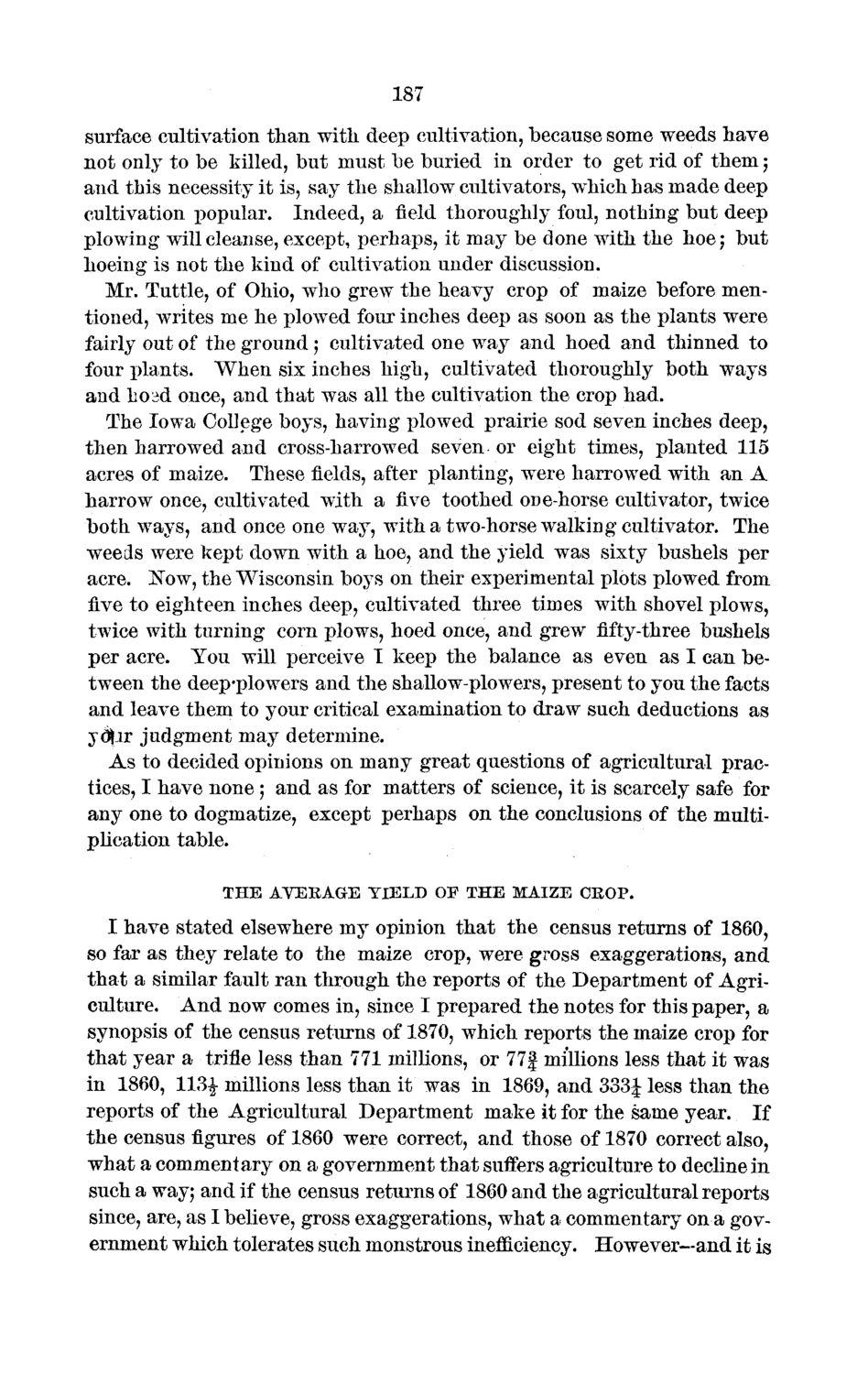| |
| |
Caption: Board of Trustees Minutes - 1872
This is a reduced-resolution page image for fast online browsing.

EXTRACTED TEXT FROM PAGE:
187 surface cultivation than with deep cultivation, because some weeds have not only to be killed, but must be buried in order to get rid of them) and this necessity it is, say the shallow cultivators, wiiichhas made deep cultivation popular. Indeed, a field thoroughly foul, nothing but deep plowing will cleanse, except, perhaps, it may be done with the hoe; but hoeing is not the kind of cultivation under discussion. Mr. Tuttle, of Ohio, who grew the heavy crop of maize before mentioned, writes me he plowed four inches deep as soon as the plants were fairly out of the ground; cultivated one way and hoed and thinned to four plants. When six inches high, cultivated thoroughly both ways and ho 3d once, and that was all the cultivation the crop had. The Iowa College boys, having plowed prairie sod seven inches deep, then harrowed and cross-harrowed seven or eight times, planted 115 acres of maize. These fields, after planting, were harrowTed with an A harrow once, cultivated with a five toothed one-horse cultivator, twice both ways, and once one way, with a two-horse walking cultivator. The weeds were kept down with a hoe, and the yield was sixty bushels per acre. ISTow, the Wisconsin boys on their experimental plots plowed from five to eighteen inches deep, cultivated three times with shovel plows, twice with turning corn plows, hoed once, and grew fifty-three bushels per acre. You will perceive I keep the balance as even as I can between the deep-plowers and the shallow-plowers, present to you the facts and leave them to your critical examination to draw such deductions as yO|ir judgment may determine. As to decided opinions on many great questions of agricultural practices, I have none; and as for matters of science, it is scarcely safe for any one to dogmatize, except perhaps on the conclusions of the multiplication table. THE AVERAGE YIELD OF THE MAIZE CROP. I have stated elsewhere my opinion that the census returns of 1860, so far as they relate to the maize crop, were gross exaggerations, and that a similar fault ran through the reports of the Department of Agriculture. And now comes in, since I prepared the notes for this paper, a synopsis of the census returns of 1870, which reports the maize crop for that year a trifle less than 771 millions, or 7 7 | millions less that it was in 1860, 113^ millions less than it was in 1869, and 333J less than the reports of the Agricultural Department make it for the same year. If the census figures of 1860 were correct, and those of 1870 correct also, what a commentary on a government that suffers agriculture to decline in such a way; and if the census returns of 1860 and the agricultural reports since, are, as I believe, gross exaggerations, what a commentary on a government which tolerates such monstrous inefficiency. However—and it is
| |